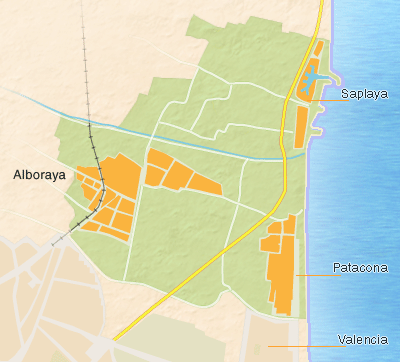
In the North of the city of Valencia we find Alboraya. A worldwide known coastal town by its excellent horchata, which maintains intact the farming tradition.
The landscape of the fertile region is its most outstanding feature, full of centenarian buildings in which once lived the country persons and laborers who worked the prosperous future that the town enjoys today. Privileged PlaceThe situation of Alboraya can not be better, in the heart of the Costa Blanca, just 5 minutes from Valencia and well communicated through the A-7 highway that crosses it municipal area. It offers to visitors a space of peace and relax in which, they can enjoy the cultural and leisure offer. In the north coast of Valencia we find a different destination, Alboraya, just 5 minutes away from the capital. Alboraya is an example of tradition and modernity. It combines the agriculture of the vegetable garden with leisure spots of modern urbanizations next to the beach, like Port Saplaya. This town keeps unscathed its agricultural tradition thanks to the cultivation of tiger nut. Its garden landscape, dotted with farmhouses and farm worker houses, becomes a leisure spot when arriving to the coastal stripe. The historic and cultural patrimony of its historical quarter of medieval origin is another of the most outstanding elements of this town. The fertile region of ValenciaEconomic force of Alboraya in the past, the fertile region has survived the tourist speculation, and it has even modeled the landscape of the town. Thanks to agricultural tradition, Alboraya maintains today a colossal rural architecture of agriculture, mainly the farmhouses and cottages. Its fertile lands, the climate and, above all, the effort of a whole region have converted the tiger nut, used to make horchata, into the international distinctive of this town. CoastIts municipal area has almost 4 kilometers of beaches, separated by the Barranco del Carraixet in two tourist enclaves. The first, the beach of the Patacona links with the esplanade of the capital. In the other side we find the urbanization of Port Saplaya with its magnificent marina, with capacity for 310 vessels.
| 
